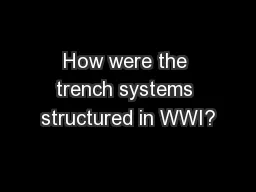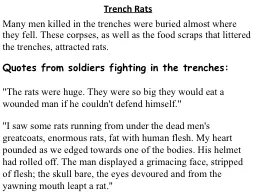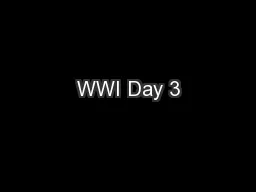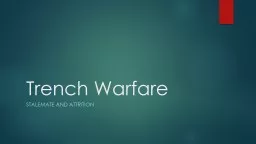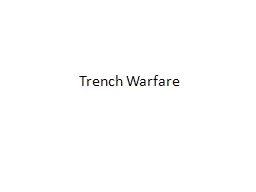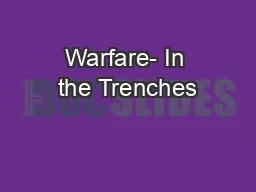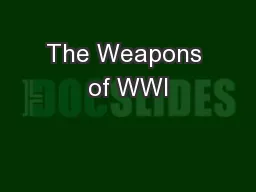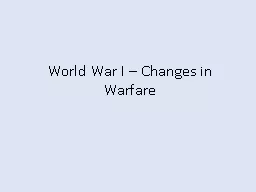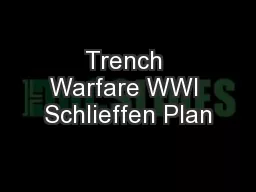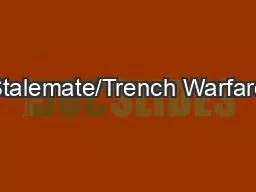PPT-Over the Top WWI:Trench Warfare
Author : warlikebikers | Published Date : 2020-06-17
The Western Front Germanys plan didnt work and France and Germany faced many months in a Stalemate Forced to settle in for the winter both sides built trenches
Presentation Embed Code
Download Presentation
Download Presentation The PPT/PDF document "Over the Top WWI:Trench Warfare" is the property of its rightful owner. Permission is granted to download and print the materials on this website for personal, non-commercial use only, and to display it on your personal computer provided you do not modify the materials and that you retain all copyright notices contained in the materials. By downloading content from our website, you accept the terms of this agreement.
Over the Top WWI:Trench Warfare: Transcript
Download Rules Of Document
"Over the Top WWI:Trench Warfare"The content belongs to its owner. You may download and print it for personal use, without modification, and keep all copyright notices. By downloading, you agree to these terms.
Related Documents


